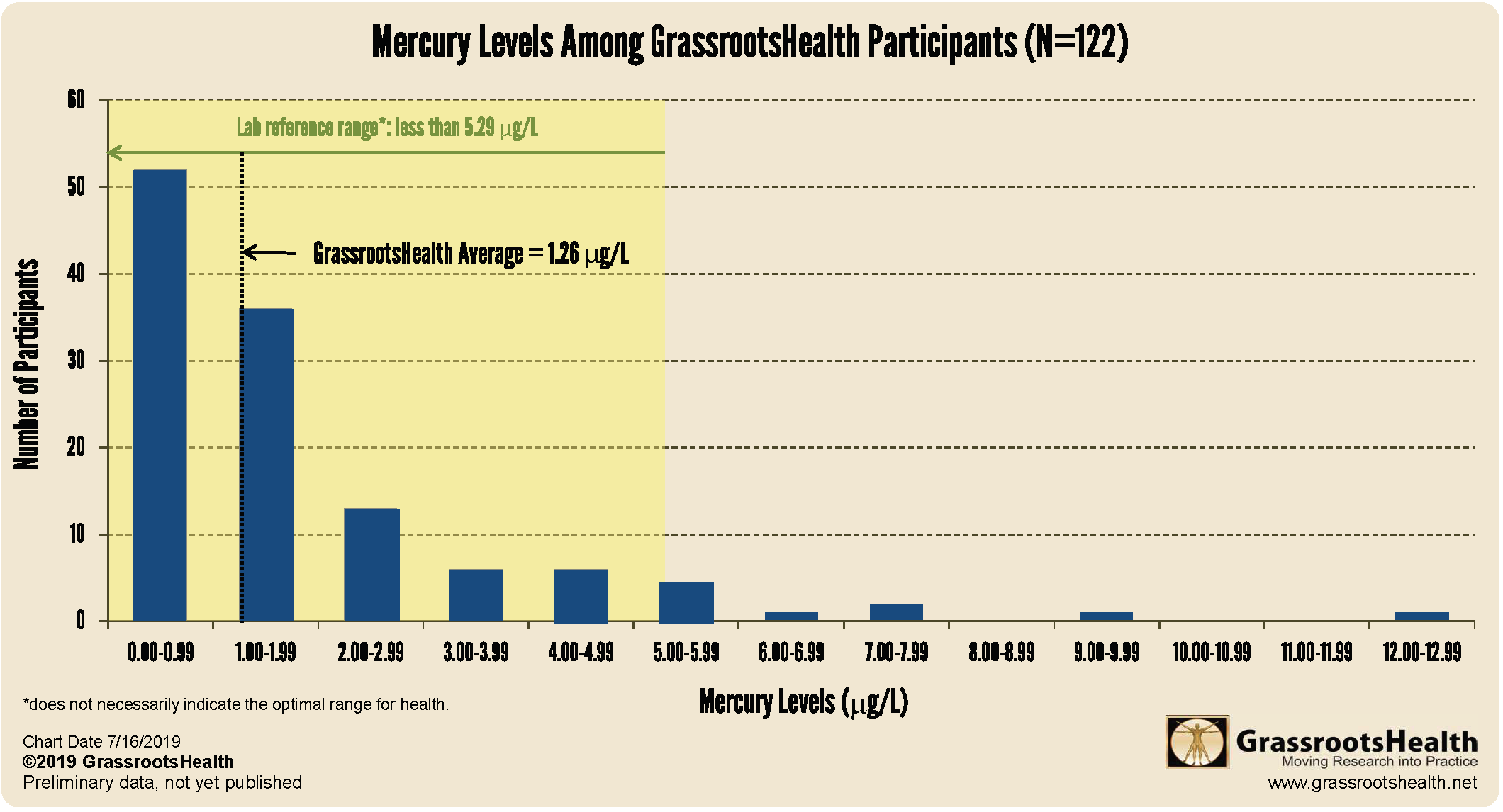Published on July 24, 2019
 Mercury is one of the most toxic heavy metals and exists in multiple forms including elemental mercury, inorganic mercury, and organic mercury. Potential health effects of mercury exposure depends on many factors, including the form of mercury, amount and length of exposure, and route of exposure.
Mercury is one of the most toxic heavy metals and exists in multiple forms including elemental mercury, inorganic mercury, and organic mercury. Potential health effects of mercury exposure depends on many factors, including the form of mercury, amount and length of exposure, and route of exposure.
Elemental mercury exposure can happen if a mercury-containing product (such as a thermometer or fluorescent light bulb) breaks, or from dental amalgams (“silver” dental fillings). Exposure to small amounts of methylmercury, an organic form of mercury, is common because a majority of fish and shellfish contain trace amounts. However, mercury levels in most people are very low and not associated with possible adverse health outcomes. More information about mercury and its health effects can be found in this previous blog, and additional information on how to address a high mercury level can be found here.
Earlier this year, GrassrootsHealth started offering a mercury test as part of the Elements Panel, which includes testing your vitamin D level along with essential elements magnesium, selenium, zinc, copper, and zinc:copper ratio, and toxic heavy metals cadmium, lead, and mercury. This test is a reflection of recent exposure to organic mercury (methylmercury or ethylmercury).
The test results for the first 122 participants who have tested their mercury levels are shown below. The average level was 1.26 μg/L. A vast majority (93%) had levels within the lab reference range (less than 5.29 μg/L); this reference range indicates the range of typical results found in the population the lab serves but does not necessarily indicate the optimal range for health.
Have questions you would like to see addressed?
If there is a topic you would like us to address, please let us know! Send your news-worthy questions to jen @grassrootshealth.org and let us know what you think we should answer or share in our news.
Do you know your mercury level?
Make sure you and your loved ones know your level of mercury and other essential and toxic elements. Find out your levels today! Log on to the shop (click the link below) to get your tests and see for yourself if your levels can be improved.
Make sure you track your results before and after, about every 6 months!
Click Here to Access the Shop Page
How can I track my mercury levels over time?
To help you track your toxin levels, GrassrootsHealth has created an online tracking system called myData-myAnswers. This will help you know how your toxin levels impact your health. Check it out today!








